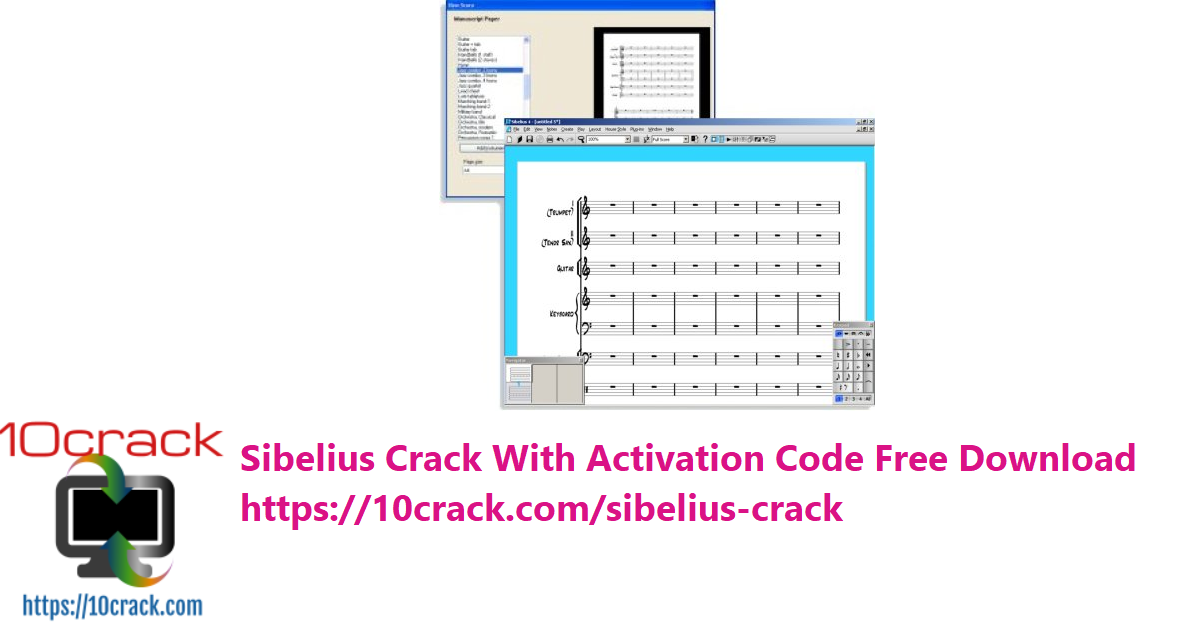
Ties are now no longer missing in chords over bar lines, and the direction of ties are respected (over or under).Sibelius now imports page margin values correctly (in previous versions, margins form odd pages were applied onto even pages, and vice versa).Better support for small staves (improvements on support added into Sibelius 8.5).

Here’s a summary for the changes to MusicXML that are included in Sibelius 8.6: As such, we rewrote how these lines are handled, so there is now very minimal cleanup to do after importing MusicXML files. When we started to work on adding support for importing glissandi lines, we needed a way to position these nicely to notes. It’s a long term project that we will chip away at for a while. The new Magnetic Glissandi lines feature was borne out of an overall improvement and better support for MusicXML.

You can also define and assign additional custom Line styles that are not based on the available default Line styles (see Line styles in the ManuScript Language Guide for more information). This read/write variable lets you attach or detach glissandi as well as other lines to a note. In Sibelius’ built-in scripting language, called ManuScript, Line objects now have a new SlideStyleId variable representing the Line style state of the note. New ManuScript support for magnetic lines In the case of the new glissandi lines, these are all converted into the old style gliss. When doing this, Sibelius will convert what it can into the equivalent object that was supported by the previous version. This is simply done by going to File > Export > Previous Version and choosing the version of Sibelius you need to export to. Opening scores from 8.6 in older versions of SibeliusĪs ever, Sibelius has a way to convert a score into an older version, allowing you to work with someone who hasn’t upgraded to Sibelius 8.6 yet. However, adding further glissandi to your score in Sibelius 8.6 will now create the new style of line. This is important to retain the same careful layout you’ve spent so much time on. These will open up in exactly the same way as before and will not move or convert any gliss. Sibelius will open any score from Sibelius v1 all the way through to Sibelius 8. Sibelius will draw the line from the note you have selected, to the next note: To enter the new gliss., port., or wavy lines, select the note with which you would like to start the line, and choose the line from the Lines gallery. The method for entering these lines has changed slightly, but it should feel familiar enough to experienced Sibelius users and is straightforward to grasp for new users.
#Sibelius 8.6 mac torrent manual#
This saves you the manual steps to reposition the lines when creating them, and subsequently with editing the notes too.

When entering Glissandi lines (Gliss, Port, or Wavy) in your score, you will now find these position themselves between the two notes, and will attach themselves to these notes, following the notehead as you move it. As you compose, Sibelius automatically updates the positioning of the glissandi lines, saving you the manual steps of positioning the lines on creation, and subsequently when editing the notes too. Sibelius automatically places your glissandi lines as you enter them into the score, positioning them between the two notes. This release introduces Magnetic Glissandi, streamlining the creation and manipulation of gliss., port. and wavy lines, as well as fixing a whole host of long standing bugs in Sibelius, improving the stability and overall speed of the program. I’m pleased to announce the immediate availability of Sibelius 8.6.


 0 kommentar(er)
0 kommentar(er)
